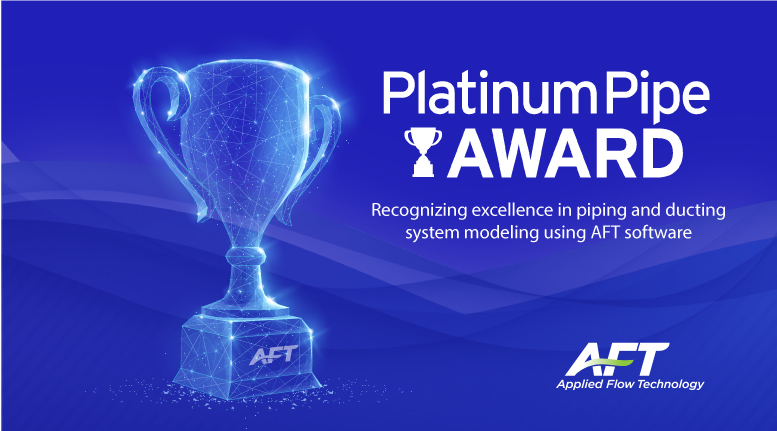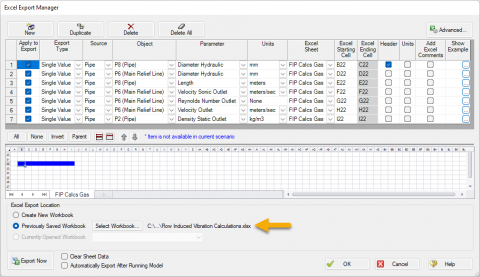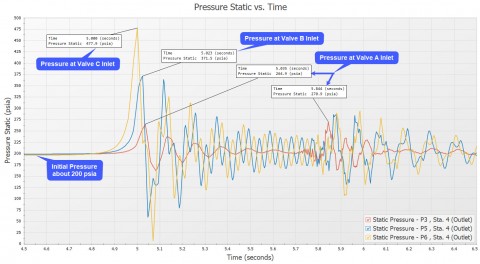AFT Blog
Twenty years ago today I was working desperately on putting the finishing touches on AFT Impulse 1.0. At the time, AFT was a pioneer in every sense of the word. AFT was the first and only company developing visual, drag-and-drop pipe flow modeling software for Microsoft Windows. And AFT Impulse was set to become the world's first visual waterhammer software for Windows. We already had orders for AFT Impulse before it was complete, such was the demand!
Previously, we talked about the Graph Guide, creating Stacked graphs and Dual-Y graphs, and visualizing the results using Animated graphs. This final installment will focus on the various ways to format graphs so they are exactly how you want them to look. In general, there are several ways to set the formatting for the various parts and regions of a graph. I will start with the model we made in the previous blog – the AFT Impulse model, ‘Pump Startup With Event Transient.imp’, which is installed in the Examples folder. Many of the formatting options are gathered together on the Formatting...
A little over 30 years ago I made a mistake. At the time I was a busy undergraduate student in mechanical engineering in California. Some students put together an official weekend trip for ME students to the Hoover Dam that included a special tour of the dam geared towards engineers and engineering students. I remember having tons of homework to do and decided not to go on the weekend trip. That was a mistake and I have regretted it ever since.
This week I was in Las Vegas at the 2016 MINExpo. AFT had a booth at the show and I hoped to publish this during the show and call it a "live" report. Alas I did not get it completed and the show ended yesterday. Hence it is "almost" live.
Previously, we talked about the Graph Guide and how to create Stacked Graphs and Dual-Y graphs. With AFT Impulse and with AFT Fathom’s XTS module, a great way to see how parameters change over time is through animated graphs. For the purpose of continuity, I am going to again start with the AFT Impulse model, ‘Pump Startup With Event Transient.imp’, which is installed in the Examples folder, and use the ‘One Pump Start With One Running’ scenario. In the previous blogs, we used a Stacked Graph and a Dual-Y Axis Graph to examine the pressures and flows at two valves (J6...
Last month my wife and I visited the Smithsonian Museum of Natural History in Washington, D.C. While there we saw an inspiring IMAX movie on the American National Parks. I have visited many of these parks and, living in the beautiful American state of Colorado, I have a great appreciation for the importance of preserving natural beauty and the environment. This month the American National Park Service celebrates it's 100th anniversary.
If you are performing a hydraulic analysis on your fire system, chances are high that you are working hard and maybe scratching your head in order to adhere to the NFPA codes. The good news is that you can streamline the calculations outlined in the codes with AFT Fathom! NFPA 15 is the standard for fixed water spray systems that are used in fire protection. AFT Fathom has been able to perform all the standard hydraulic calculations for a fire protection analysis for a long time, including the usage of Hazen-Williams factors. But now with AFT Fathom 9, you can easily...






